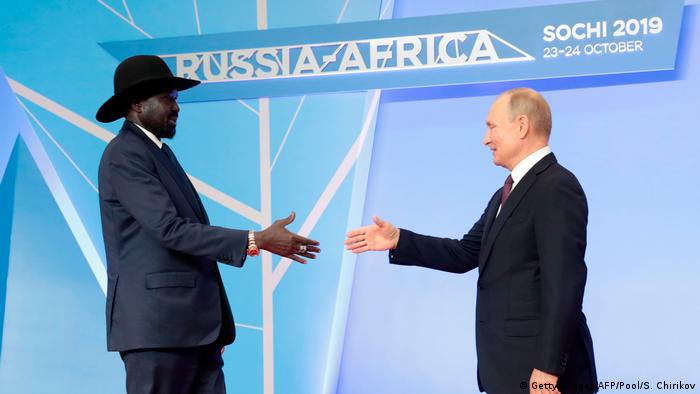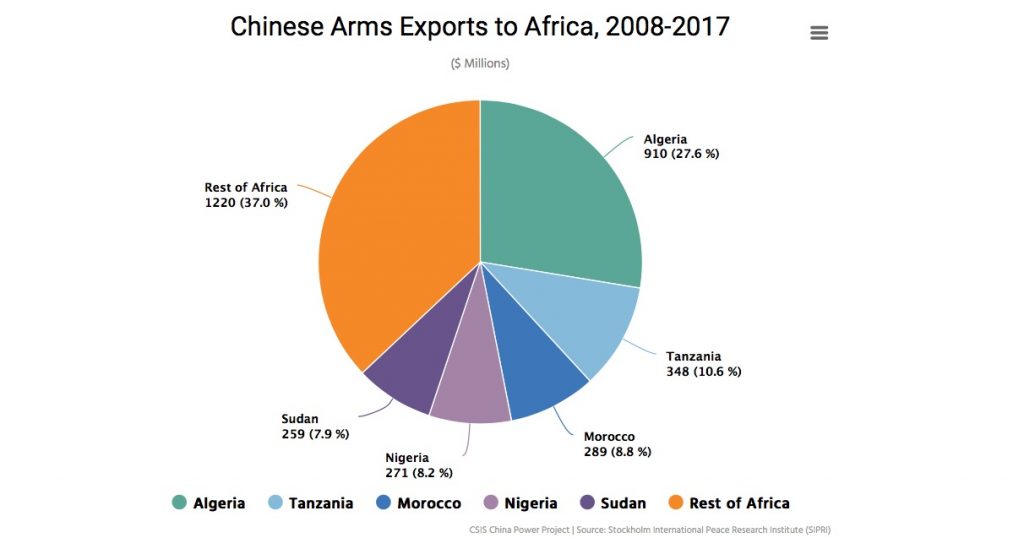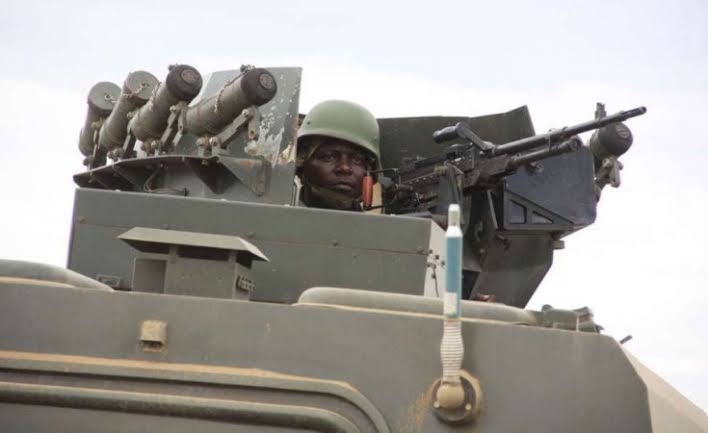An unintended consequence of Russia’s “Special Military Operations” in Ukraine is that African militaries will have to look elsewhere for critically needed spare parts to keep their military equipment in working order.
In Ukraine, the superior Russian military continues to target key military-industrial infrastructure to terminate Kyiv’s ability to regenerate damaged or out-of-commissioned equipment of its military forces.
Cutting off an enemy’s means of repairing or refitting its military equipment will significantly impact its ability to properly wage war. This is considered to be one of Russia’s strategic goals.
This singular strategic goal for Russia will also severely hamper Africa’s militaries’ own ability to carry out its wars, particularly against non-state and sub-state adversaries.
A lot of African militaries rely heavily on Soviet-built equipment which has mostly been passed down to surviving states such as Russia, Ukraine, Belarus, Czech, and Georgia.
In the old Soviet dynasty, Russia was the administrative head while Ukraine was more or less the technical bastion. Most of the Soviet military equipment at the time was fabricated in Ukrainian heavy factories. Ukraine inherited a great deal of former Soviet military-technical expertise which has allowed the country to grow a vibrant military-industrial complex post-Soviet era.
With Africa facing several worrying security crises, experts are concerned about the continent’s ability to source much-needed parts for its military forces before they start falling apart.
Africa’s defense analyst Darren Olivier echoes these sentiments, explaining that “a lot of forces having to either get by with indigenization attempts, as Nigeria has done or turn to China.”
“I don’t see other states being able to scale up their support rapidly enough to fill the gap,” he said.
Looking back at old contracts, Darren continued, “support for ex-Soviet or more recent Russian gear is predominantly from Russia, Ukraine, and Belarus. Two are sanctioned and probably can’t supply or support, the other won’t be in a position to do so anytime soon.”
With Africa relying heavily on Russia, Ukraine, and Belarus, Military Africa takes a look at how these countries are invested in defence sector of the continent.
Ukrainian weapon systems in Africa
In the current disposition, Ukraine carries out a lot of maintenance work for African militaries with the most recent in 2022, Eastern European technicians assisted Nigeria in fixing some of its dilapidated T-72 main battle tanks acquired in 2015 during the start of the terror insurgency in the northeast.
Nigeria acquired a mix of T-72A, T-72AV, T-72M1, T-72B from Hungary, Czech, and Ukraine in 2014-15. T-72B model was acquired from Ukraine in 2014, and T-72M1 was acquired from Czech in 2015.
In 2020, Ukraine’s Odessa Aviation Plant (OAP) completed a major repair and upgrades of six of Uganda’s L-39 Albatross training and combat aircraft.
The repair and upgrade work was carried out by Progress inc, under a contract awarded. Progress Inc is a UkrOboronProm subsidiary., under a 2018 agreement.
Nigeria’s Proforce limited and Ukrainian PJSC AUTOKRAZ are currently in a partnership agreement to jointly manufacture both military and civilian grade heavy-duty off-road trucks under the brand name KRAZ-PROFORCE, the KrAZ trucks in Ogun state, Nigeria. It is uncertain how the war in Ukraine will affect the fulfillment of the partnership, Ukraine may no longer be able to fulfill its own end if the agreement as some of its key facilities are being targeted by Russia.
Similarly, the Rwandan military contingent battling the Islamic State-linked insurgents in Mozambique are employing their Ratel-mounted Ukrainian-made BAU-23×2 Remote Controlled Weapon Station (RCWS) armed with Soviet 23 mm ZU-23-2 anti-aircraft gun.
In 2016-19, Ukraine delivered up to 50 modernized T-64BV-1 main battle tanks to the Democratic Republic of Congo Army. This batch of the T-64 is a recently upgraded variant of the highly potent tank also known as the T-64B1M which was fitted with the Nozh Explosive Reactive Armor (ERA) that can protect against tandem charge shaped warheads and can also reduce the penetration of Armor-Piercing, Fin-Stabilized, Discarding Sabot (APFSDS) tank round by 90%.
Russian weapons gains ground in Africa
Russia on the other hand is a major supplier of arms and ammunition to Africa. In the last two decades, Moscow has managed to deepen its connection with Africa and become the biggest arms supplier on the continent. Russia is the largest exporter of weapons to Sub-Saharan Africa. Its arms exports to Africa have increased by 23 percent over the last four years when compared to the previous four-year period, 2011–2015.

Once a major supplier during the Soviet era, Russia’s role in Africa waned after the collapse of the USSR. But by 2000, Russia had made inroads again, and within the last two decades Russia has managed to become the biggest arms exporter to Africa. Currently, it accounts for 49% of total arms exports to Africa, according to the database of the Stockholm International Peace Research Institute (SIPRI).
“In 2020 and early 2021 alone, we signed contract documents worth over $1.7 billion in this region and brought the number of countries in Central, Western and Southern Africa in our order portfolio to 17,” said Alexander Mikheev, Director General of Rosoboronexport to Military Africa.
Although military helicopters, strike fighter aircraft, tanks, and various types of anti-tank missiles continue to comprise the vast chunk of Russia’s arms exports to Africa, the Kremlin has been looking to diversify its portfolio into amphibious warfare systems.
“Today, Rosoboronexport is marketing helicopters, air defense systems, naval products, armored vehicles, equipment for law enforcement agencies, airport, and critical infrastructure security equipment, small arms, including special weapons, in the region.” the company continued.
Russia’s Kalashnikov Concern recently sold a number of BK-10 assault boats to a country in Sub-Saharan Africa including Congo.
Russia hosted the first-ever Russia-Africa summit in Sochi in 2019 as a way of further identifying cooperation possibilities across the continent. During the summit, Russian President Vladimir Putin stated that “the strengthening of ties with African countries is one of Russia’s foreign policy priorities”.
Most of the products exhibited at the event showed that Russia is focusing on improving the models that have been demanded the most, rather than introducing costly new products.
In 2020, Russia disclosed that it has sold defence equipment worth USD 14 billion to Africa, amounting to up to 30-40% of its defence exports…’
While “Sub-Saharan states” bought defence equipment worth USD 2 billion.
Algeria and Egypt are historically Moscow’s two biggest clients, but Russian exporters have expanded their presence in Nigeria, Tanzania, and Cameroon and have over the past few years considerably widened their export lead over the next two biggest players in the African market, France and the United States.
Algeria alone acquired around 200 aircraft items from Russia from 2000 to 2019, ranging from helicopters to fighter aircraft, and various models of surface-to-air missiles. Algeria also ordered more than 500 tanks, as did Uganda (67 tanks). Burkina Faso, Egypt, Ethiopia, Libya, and Morocco acquired divers weapons too.
As a result of recent terror activities, about 160 Russian military advisors were deployed to Mozambique since the end of August, especially in Cabo Delgado.
Furthermore, a recently released report reveals that Russian technicians provided the Libyan National Army (LNA) led by Khalifa Haftar with technical assistance on weapons repair and upgrade.
A leaked official document showed that the Russian technicians are repairing the LNA’s Soviet-supplied armored fighting vehicles and artillery. RUB18.8 million (USD278,000) of parts was supplied as part of this process.
The Nigerian Army intends to leverage its longstanding and productive relationship with Russia to acquire more military hardware to deal with the various security threats plaguing the country.
The Chief of Army Staff, Lt. Gen. Faruk Yahaya, has solicited the help of the Russian government to support Nigeria with “sophisticated equipment” to improve security in the country.
Meanwhile, Nigeria awaits the delivery of at least 5 Russian-built Mi-35M hind helicopter gunships. Nigeria ordered 12 Mi-35Ms in September 2015. Deliveries began in December 2016, with half of the order presently fulfilled.
Delivery of the remaining six helicopters was delayed largely by anti-Russian sanctions, according to the Nigerian Ambassador to Russia Steve Davies Ugbah.
“Sanctions against Russia do not help this matter, as you can imagine. Russia is a reliable partner that always fulfills its obligations. We will agree on the delivery of the remaining Mi-35 helicopters, and then we will see what we can do as part of the law.”
Now, Moscow may not be able to supply these helicopters to Nigeria at this time because its main priority is now to its combat forces fighting in Ukraine.
Military researcher Miguel Miranda, an author and founder of 21st Century Asian Arms Race does not see a cause to worry “as there are varying levels of self-sufficiency among some African military industries. Egypt is a particular standout. If long-term serviceability is on the line perhaps it’s better to develop local capacity. This is easier today than ever before.”
However, countries that purchased aircraft (Antonovs, etc.) and armored vehicles from Ukraine are certainly in an awkward position, he explains “I believe Angola, Algeria, Ethiopia, Egypt, Libya, and Nigeria are the ones who should be most concerned. However, the outcome of the war remains uncertain more than two weeks after hostilities commenced.”
“A silver lining is there are many alternatives to consider if spare parts and maintenance are lacking for T-72 tanks and Kraz trucks. In the worst-case scenario, there’s always China available as an alternative if African militaries wish to ditch–or just augment–their inventories. If the issue is with old helicopters and MiGs many countries have the expertise in servicing these aging platforms.”
These present opportunities for Turkey, China, as well as African indigenous defence companies to step up and fill the vacuum.
African militaries may have to turn towards China, Turkey for most of their needs if local companies cannot scale up fast enough to handle heavier demands. Although Darren Olivier doesn’t see the possibility of African defence companies scaling up in time to sustain the Eastern European military equipment, however, he explains that Turkey and China could build up their capacity and marketing to support these systems.
Cheap Chinese arms entice African militaries
China on one hand already accounts for 13% of arms exports to the continent and could become a bigger player in the arms supply business. In the past decade, China has enjoyed export successes in the continent, largely due to the affordability of its hardware. Years of economic growth spurt alongside China’s ongoing military modernization has enabled the country to emerge as a major player in the global arms trade. From 2013 to 2017, China’s arms exports to Africa surged 55 percent from the previous five-year period of 2008 to 2012, according to Stockholm International Peace Research Institute.

“Close to two-thirds of African militaries operate Chinese equipment, with close to a dozen new players emerging to supply this market. Their equipment is becoming more sophisticated. They can also be delivered at lower prices and far more quickly than that from other suppliers,” said Joseph Dempsey, a research analyst at the Military Balance, a global defence think tank.
Turkey: a new player in the defence scene
While Turkey’s recent drive to market its products in Africa is finding success. Turkey exponentially increased arms exports to Africa in 2021. A report released by Turkey’s General Assembly of Exporters shows a record number of arms exports.
According to Turkey’s 2021 export figures announced by the Turkish Exporters Assembly, Turkey’s arms sales reached a record level, with the biggest increase to African countries.
The value of Turkey’s arms sales to Africa in 2021 rose by 700 percent to $328 million, from $41 million in 2020, according to data from Turkey’s General Assembly of Exporters.
Kenya, Uganda, Ethiopia, Nigeria, Tanzania, Rwanda, and Somalia are some of the Eastern African countries that have defence pacts with Ankara, offering a market for rifles, tankers, and drones.
Turkey offers competitive prices for its military hardware, with a no-strings-attached policy. Ankara already has a military base in Somalia and Morocco.
Nigeria stands out for the acquisition of targeting pods from the company ASELSAN and Niger for the TAI Hurkus combat aircraft and, like Morocco, the Bayraktar TB2.
Africa will need to look inwards
The bottom line is African companies may have to step up to fill these needs but can they do it at scale fast enough before some equipment starts to fail?
That is the big question! With Africa’s defence technology powerhouse, South Africa is facing a severe technical dearth following the financial woes bedeviling Denel its main arms manufacturer.
Nevertheless, there exists a ray of hope as many African countries are stepping up their ante in the defence sector. In recent times, Egypt, Algeria, Nigeria, Kenya, and Ethiopia have begun reaching a level of self-sufficiency in some essential areas.
If this momentum is sustained, Africa may in the long term equip its forces with its indigenous defence systems.







